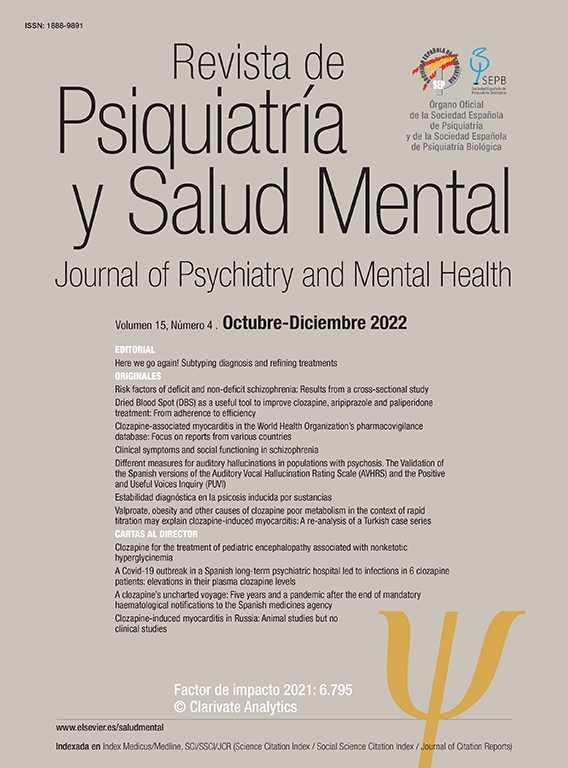Few evidence on the use of antipsychotics in people with intellectual disabilities and challenging behaviors, generates the need to develop studies that contribute to collect, compare and synthesize the available information. The present systematic review and meta-analysis aims to determine the clinical efficacy of antipsychotic medication in reducing critical episodes in this population.
MethodsWe searched Web of Science, Scopus, EBSCO, Embase, and PubMed for randomized controlled trials of antipsychotic medication versus placebo. Preliminarily yielded 1354 abstracts and citations; six studies with 274 subjects met the inclusion criteria of studies with experimental design, longitudinal type, with pre- and post-intervention measurements.
ResultsThere is evidence for the use of psychotropic drugs in the acute management of challenging behaviors in patients with intellectual disability (SMD=−0.85; 95% CI=−1.69 to −0.01; p=0.05).
ConclusionsOur results coincide with the recommendations on the efficacy of the use of antipsychotics. Although our study provides evidence, the limited number of studies included in this research does not allow us to obtain totally conclusive results, although it can be considered as a guide for future studies.
Existe escasa evidencia sobre el uso de antipsicóticos en personas con discapacidad intelectual y conductas desafiantes, lo que genera la necesidad de desarrollar estudios que contribuyan a recopilar, comparar y sintetizar la información disponible. La presente revisión sistemática y metaanálisis tiene por objetivo determinar la efectividad clínica de la medicación antipsicótica en la reducción de episodios críticos en esta población.
MétodosFueron realizadas búsquedas de ensayos controlados aleatorios de medicación antipsicótica versus placebo en Web of Science, Scopus, EBSCO, Embase y PubMed. La búsqueda arrojó preliminarmente 1354 resúmenes y citas; fueron seleccionados seis estudios con 274 sujetos que cumplieron los criterios de inclusión, presentando diseño experimental de tipo longitudinal, con mediciones previas y posteriores a la intervención.
ResultadosExiste evidencia para el uso de psicofármacos en el manejo agudo de conductas desafiantes en pacientes con discapacidad intelectual (DME=-0,85; 95% CI=-1,69 to -0,01; p=0,05).
ConclusionesNuestros resultados coinciden con las recomendaciones sobre la eficacia del uso de antipsicóticos. Pese a que nuestro estudio aporta evidencia, el número limitado de estudios incluidos en esta investigación no permite obtener resultados totalmente concluyentes, aunque puede ser considerado como guía para estudios futuros.
Artículo
Comprando el artículo el PDF del mismo podrá ser descargado
Precio 19,34 €
Comprar ahora













